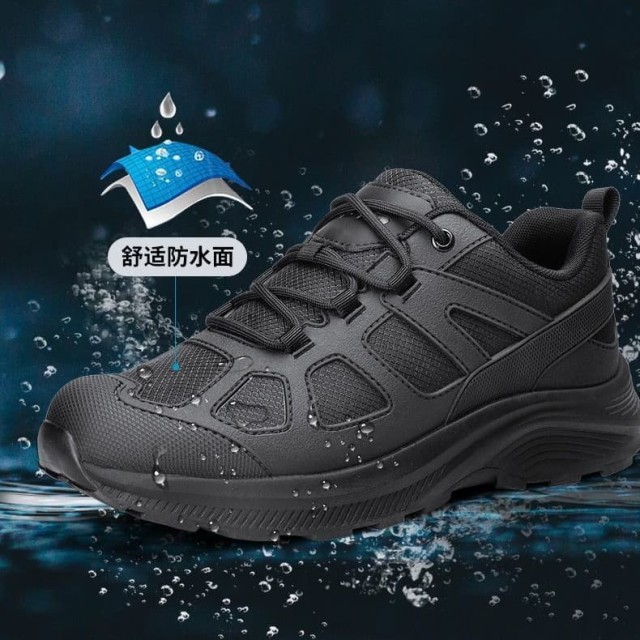For workers in wet environments—from construction sites to food processing plants—waterproof work boots aren’t just about comfort; they’re a frontline defense against preventable health risks. This article explores how the right waterproofing technology combats foot infections, injuries, and long-term occupational hazards, backed by material science and OSHA compliance insights.
The Critical Role of Waterproofing in Workplace Foot Protection
How Moisture Exposure Leads to Foot Infections and Injuries
Prolonged exposure to moisture breaks down skin integrity, creating entry points for bacteria and fungi. Research shows damp footwear:
- Increases infection risk: Fungal conditions like athlete’s foot thrive in moist environments.
- Causes structural damage: Soggy leather or fabric loses durability, compromising puncture resistance.
- Elevates injury likelihood: Wet soles reduce traction, raising slip/fall risks on slick surfaces.
Waterproof boots act as a barrier, maintaining dryness even during extended shifts.
Engineering Waterproof Boots: Materials and Technologies for Hazardous Environments
Modern waterproofing relies on two key approaches:
-
Material Selection:
- Thick leather uppers resist water penetration while offering durability.
- Chemical-resistant rubber outsoles protect against spills and sharp objects.
-
Waterproofing Technologies:
- GORE-TEX liners: Breathable membranes block external moisture while releasing sweat vapor.
- Polyurethane coatings: Cost-effective for sealing seams but less breathable over time.
Did you know? Boots with Goodyear welt construction and sealed welting offer superior waterproofing by preventing water ingress at stitching points.
Selecting the Right Waterproof Boots for Your Industry
Case Studies: Success Stories from High-Risk Sectors
- Food Processing: OSHA mandates slip-resistant, waterproof footwear to prevent bacterial growth from constant moisture exposure.
- Construction: Steel-toe waterproof boots with puncture-resistant soles reduce injury rates by over 30% on sites with standing water.
Maintenance Myths vs. Realities: Maximizing Waterproof Longevity
Myth: "Waterproof boots never need re-treatment."
Reality: Even high-end materials degrade. Prolong performance by:
- Applying waxes/sprays to weak spots (e.g., welting) every few months.
- Storing boots in dry, ventilated areas to prevent mold.
Step Safely with 3515’s Waterproof Work Boot Solutions
For distributors and bulk buyers, 3515 combines OSHA-compliant designs with advanced waterproofing to reduce workplace injuries. Our boots are engineered for:
- All-day dryness: Breathable liners prevent sweat buildup.
- Hazard-specific protection: From chemical spills to electrical risks.
Upgrade your safety inventory—partner with 3515 to equip workers with reliable, health-protective footwear.
Products You Might Be Looking For:
Explore waterproof steel toe work boots
Related Products
- Wholesale Customizable Suede Safety Boots - Puncture-Proof with Velcro Closure
- Wholesale Durable Breathable Safety Boots Custom OEM Manufacturer
- Athletic Safety Shoes with Dial Closure & Steel Toe for Wholesale & Custom Manufacturing
- Wholesale Safety Footwear Manufacturer for Bulk & Custom OEM Orders
- Customizable Anti-Smash Safety Boots for Wholesale & Private Label Manufacturing
Related Articles
- How to Choose Work Boots That Match Your Job's Safety Demands
- Matching Men’s Work Shoe Safety Technologies to Workplace Hazards
- How to Extend Work Boot Lifespan: Science-Backed Care for Safety & Savings
- Work Boots vs. Western Boots: How to Choose the Right Footwear for Labor Safety
- How Safety Work Boots Engineer Protection: Features and Standards for Targeted Hazard Mitigation



















